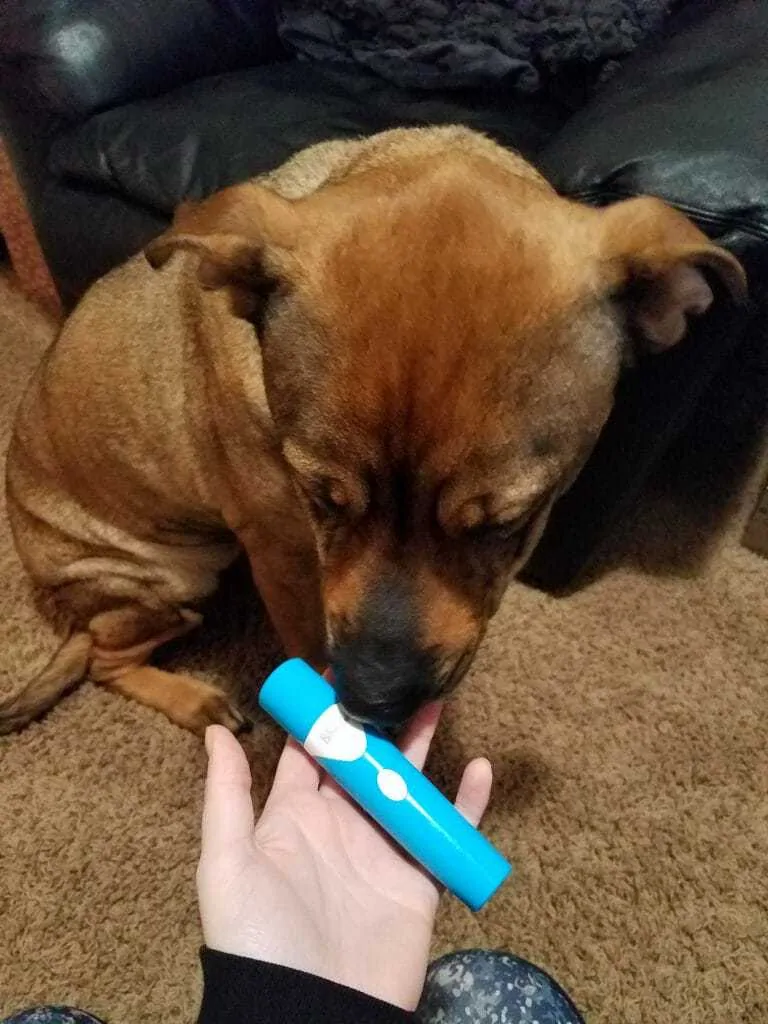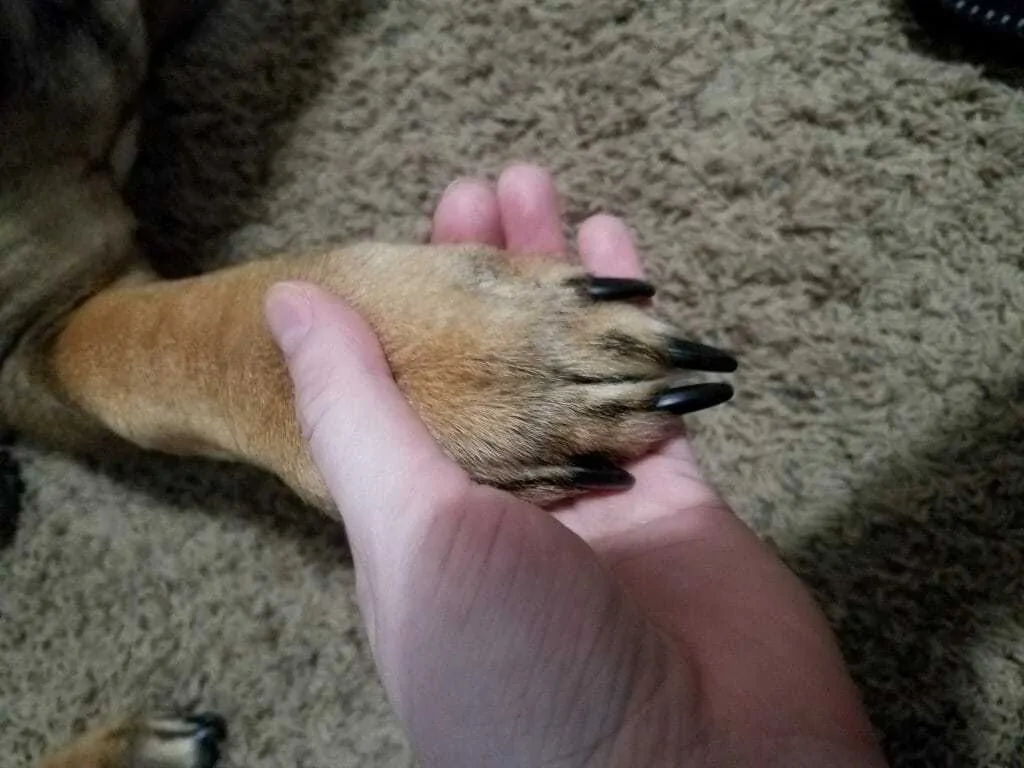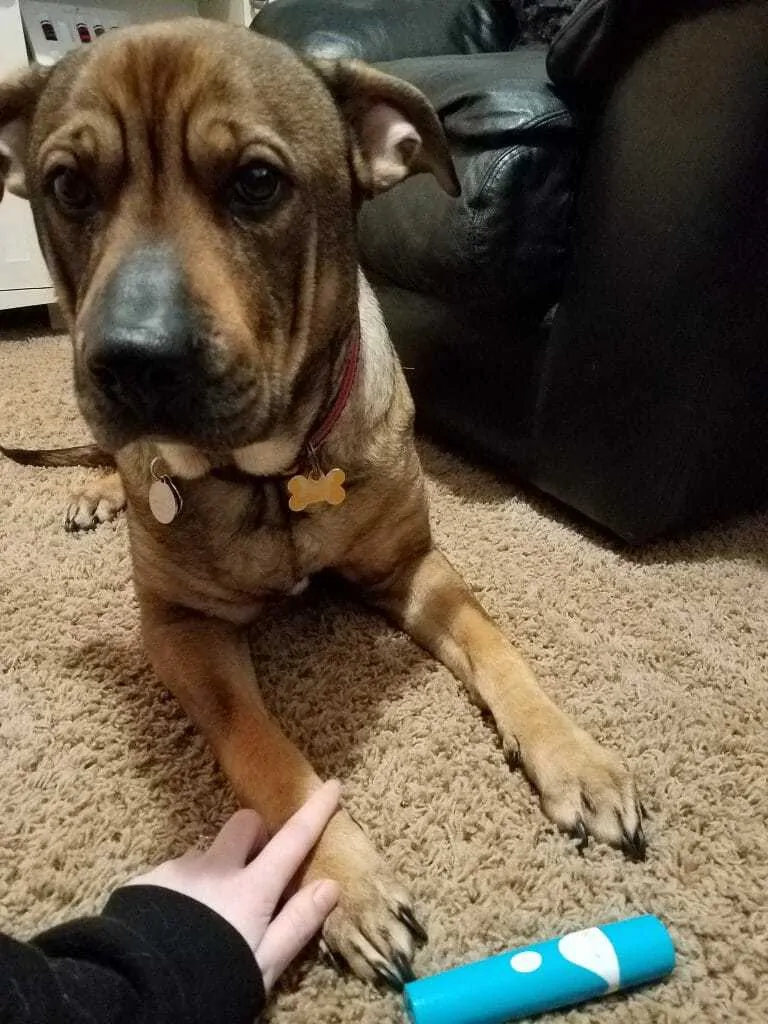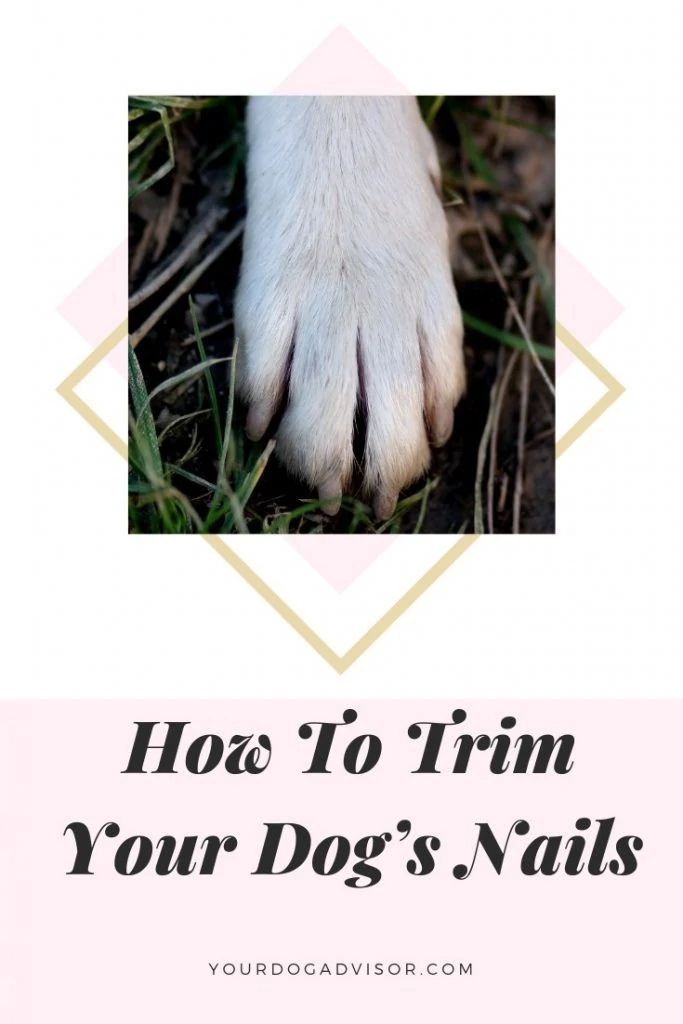Looking to master how to trim dog nails? As my 3-year-old Pitbull / German Shepherd mix, Lucy, trots down the hallway I hear the clickity-clack of her toenails on the hardwood and I know it’s time for a trim – I need to trim my dog’s nails back. This realization previously filled me with dread; such is the case for many dog owners who are not sure how to go about nail trimming.
Lucy, 3 years old, Pitbull/German Shepherd mix. Trimming your dog’s nails is not the easiest task
During earlier attempts at trimming my dog’s nails, Lucy had tendencies to yank her paw away from me as I tried to trim her nails using a too-small dog nail clipper. Fearing that I would hurt her and feeling frustrated, I would end up taking her to the vet and paying for them to do it for me.
Many dogs associate fear, anxiety, and displeasure with those dog nail clippers when they see them, as well as their owners who dread this negative experience. If you have ever accidentally clipped your dog’s nail too short, grazing the quick and hurting them, you may be quite reluctant to try DIY nail trimming again. This predisposition of negative emotions and associations is not a recipe for a successful at-home dog nail trim.
So, how can you make trimming your dog’s nails a more positive and productive experience for both you and your furry loved one? Let’s take a closer look at some important topics you should be aware of when maintaining your dog’s nails at home.
Contents
When do Dog Nails Need Trimming
Frequent dog nail trimming is important. When your dog’s nails touch the ground, it usually is the right time to trim the dog nails. Once you get your dog used to nail trims and you are able to cut the nail without causing too much pain, it becomes much easier.
Choose the Right Tool
Filtering through all of the available styles, sizes and variations of devices that claim to trim dog nails can be daunting, making it a difficult decision. The right tool to use for trimming your dog’s nails that works for you and your dog will depend on your dog’s size, the shape and size of their nails, and overall functionality.
For smaller breeds, using a clipper that is sized appropriately will suffice. Make sure that the design of the dog nail trimmer has a safety guard to prevent over-cutting the nail. Selecting a clipper that has a non-slip hand grip material is important for safe use as well. This nail clipper on Amazon fits these parameters and would make a good option for smaller dogs.
When choosing the right tool for large breed dogs it can get tricky. The larger the dog usually means the thicker their nails can get. If you elect to use a clipper, the same guidelines apply as did for smaller breeds. Simply select one that is sized to accommodate larger nails.
I personally found that using a high-quality and high-powered dog nail grinder works the best for my dog, Lucy and I. Lucy’s nails are quite narrow, but are vertically thick making it difficult to comfortably and effectively use a clipper without splitting her nails. This Boshel nail grinder has worked perfectly for my needs and it has a quiet motor so Lucy tolerates the sound well.
Lucy’s nails have vertical thickness, but are narrow
Using a clipper and a grinder in combination is good option as well. Even if you are only able to clip off a small portion of the nail you could then supplement with using a grinder to file down the rest to the appropriate length. Keep in mind, if you do accidentally clip the quick of your dog’s nail, which is the blood vessel inside your dog’s nail, you can stop bleeding with styptic powder or cornstarch.
Before You Start Trimming
If you are introducing a new tool into your dog’s at-home grooming routine, be sure to acclimate them to it before using it. You can do this by holding it and letting them sniff it, or placing it down on the ground and allowing them to approach it while supervised. If you elect to use a grinder, allow your dog to hear the noise and learn that it is not a threat.
Lucy sniffing the nail grinder
Once your dog has determined that their new nail device or nail trimmers isn’t going to eat them, there are other steps you can take to ensure that nail trimming anxiety is a thing of the past for both you and your dog.
Since many dogs may not enjoy having their paws touched at all it can be a significant barrier to attempting at-home nail trimming. Introducing your dog to paw massages can be an effective way to turn that kind of touch into a positive and rewarding activity for you and your dog.
Make sure that when you set aside time to massage your dog’s paws that you do not incorporate the nail trimmers during this time. Don’t even have it out or visible as you hold your dog’s paw. Having some treats handy to reward your dog when they allow you to handle their paws gently will shift the experience to a more positive one. Using vocal praise when your dog behaves well having their paws handled and massaged as you hold your dog’s paw is important as well.
Gently massaging Lucy’s paws
It’s Time to Trim Your Dog’s Nails
Get your treats ready and find quiet area with no distractions. Choosing a place where your dog feels relaxed and comfortable is important to consider when you trim your dog’s nails.
Granting that your dog is obedient, lays down on command, and will be still while you trim their nails you can begin one nail at a time. Speaking to your dog in a calm and praising tone will help them to know everything is alright and they are doing a good job. Be sure to give them a treat here and there to reward good behavior.
Lucy is comfortable and ready to begin
For you and your dog, it may not look this simple and calm. If your dog squirms, pulls their paw, or even nips at you during this process it may be a good idea to have a partner assist you. Having one person gently restrain your dog while you trim or file their nails will keep everyone safe if your dog flails or fidgets repeatedly.
Keep in mind that long sessions of nail trimming can be detrimental to your dog’s tolerance of the overall experience. Giving them breaks if they start to become uncomfortable or fidgety will help them “reset” and you can come back to the task after about 15 minutes.
I personally will do my dog’s two front paws first and at this point she is usually starting to try and pull her paw away from me (gently). This is her letting me know that she doesn’t want to do this anymore. I’ll take her outside and let her stretch her legs, have a potty break, etc. Then after she’s had enough time for a break we’ll return and finish her back paws.
For those of you with particularly difficult dogs that have little to no tolerance for having their paws handled let alone having their nails trimmed you may need to seek professional assistance. Selecting a high-quality groomer is important since you know your dog may be a difficult client for them. There are also veterinary clinics that may include nail trimming in their offered services.
If you and your dog have your work cut out for you when it comes to how to trim your dog’s nails just remember to have patience and give it time. Adjusting your dog’s behavior is a process and it won’t be instantaneous. Choose the tool and method to cut your dog’s nails at home that is safest and most effective for you both.





